Welcome to the final installment in our three-part series “Modeling from postcards.” This time, we’ll take a look at cards that show two of Crookston’s rail-served industries.
Welcome to Wilds. In 1964, Cargill Inc. built a grain elevator at the south end of Crookston near the station sign Wilds. In addition to the main elevator, there were two 164-foot diameter grain tanks on the south side of the property.
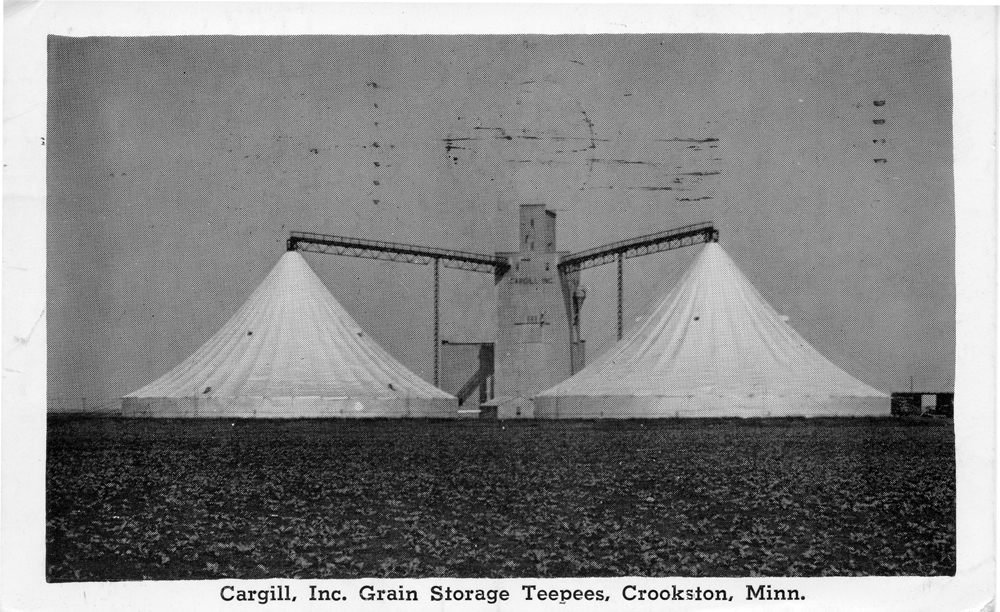
Though my dad did a good job documenting the rail scene in Crookston, I could only find one photograph in his collection that showed Cargill when the grain tanks were still standing. He was facing south in Cargill’s gravel driveway, so the second grain tank wasn’t completely visible. The image on the postcard, looking to the northwest and most likely taken from U.S. Highway 75, shows the elevator with a dust collector on the side, the grain tanks, conveyor bridges extending from the elevator to the tanks, and a building (presumably the office). That looks like a 40-foot boxcar at the right edge of the image.
Much has changed since this postcard was made. The grain tanks were torn down in the mid-1980s. Busch Agricultural resources acquired the elevator in 1991. The elevator, which handled barley, had a 175,000-bushel capacity and was set up to load and unload covered hoppers. The siding had a 10-car capacity.
CHS Mid-Valley Grain purchased the facility in 2005. Many upgrades and additions were made to the elevator, including large-capacity grain bins, new elevator legs and conveyors, unloading dumps, and an inbound scale. Minnesota Northern RR brings in covered hoppers from smaller elevators for unloading, and 100-plus-car BNSF Ry. unit grain trains are loaded here.
One sweet customer. To the north of Cargill is American Crystal Sugar Co., the largest rail-served customer in Crookston. The plant, the company’s third in the Red River Valley of the North, was dedicated on August 28, 1954. Inbound commodities include coal, coke, and limestone. Outbound products include sugar, molasses, and beet pulp.
So, what’s shown in this 1958 image? The portion with the “American Crystal Sugar Company” lettering on top is the main building. The two-story structure in front of that is the factory office. The partially visible structure to the right is the sugar warehouse. The pulp dryer and pulp warehouse are at left.
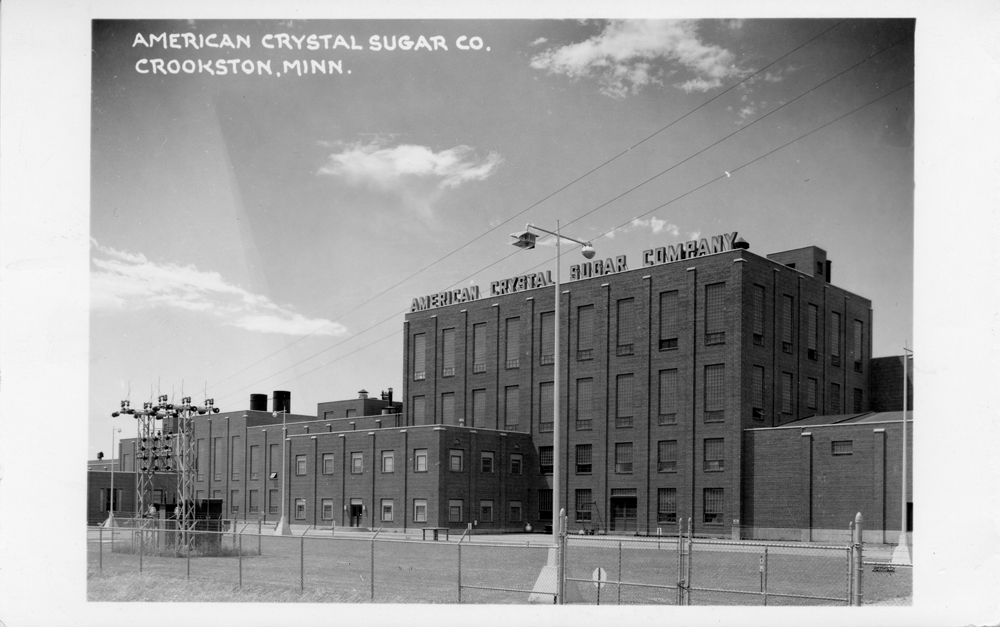
Could you model all of American Crystal’s sprawling campus (approximately sixth tenths of a mile wide [north-south] by four tenths of a mile deep [east-west]) with what’s shown in this postcard? Nope. In fact, this card doesn’t even show the rail-served side of the industry. However, there are things you can learn. Though each building in the scene has a different use, they all follow the same basic construction. Reasonable facsimiles of these structures could be modeled using off-the-shelf modular wall components.
Many of the windows in the production buildings appear to be a combination of glass block on top with eight-pane industrial windows at the bottom. Notice that the middle four panes are titled out on a few of them, and vents were used in place of the industrial windows on the top floor below the “om” in “Company.” The factory office has glass blocks with 8/8 double-hung windows.
Other details that stand out include roof vents and stacks, the transformer yard in the lower left corner, a chain link fence with barbed wire on top, and 1950s-style streetlights (is that a speaker on the pole by the entry gate?)
As with Cargill, things have changed at American Crystal. The lettering has been removed from the top of the main building, the transformer yard has been relocated, and the fence and gate have been moved closer to U.S. Highway 75. In addition, six 46-foot-diameter storage bins and a hopper loading shed are now in front of the sugar warehouse. Other changes beyond the scope of this scene have taken place at the factory as well.
Give postcards a look. I hope you’ve enjoyed the three-part “Modeling from postcards” series. Though the cards I’ve shown are specific to my hometown, you can find similar views for communities large and small. The next time you’re at an antique store or searching your favorite online auction website, take a look at postcards. Over the years I’ve been pleasantly surprised by the cards I’ve found. I think you will be too.






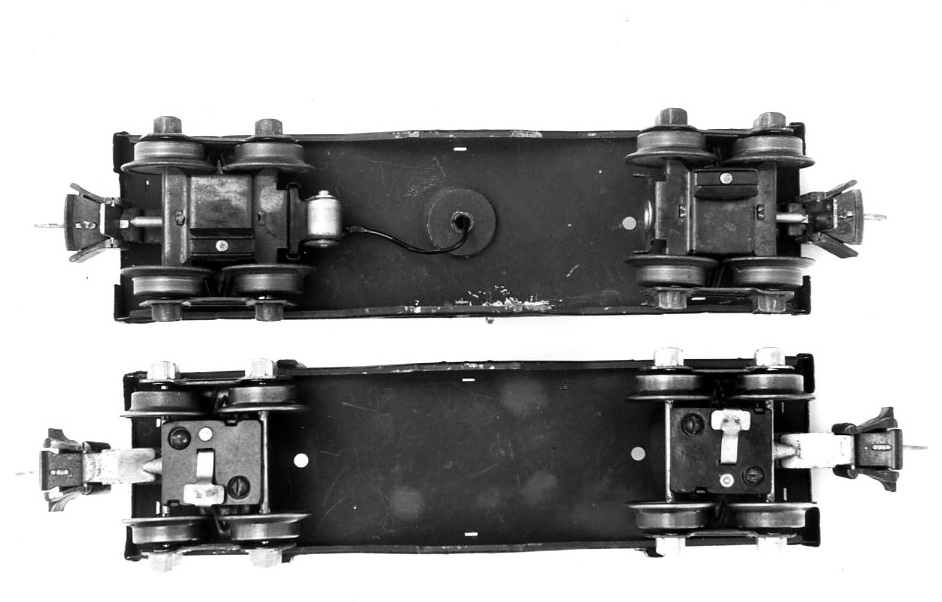
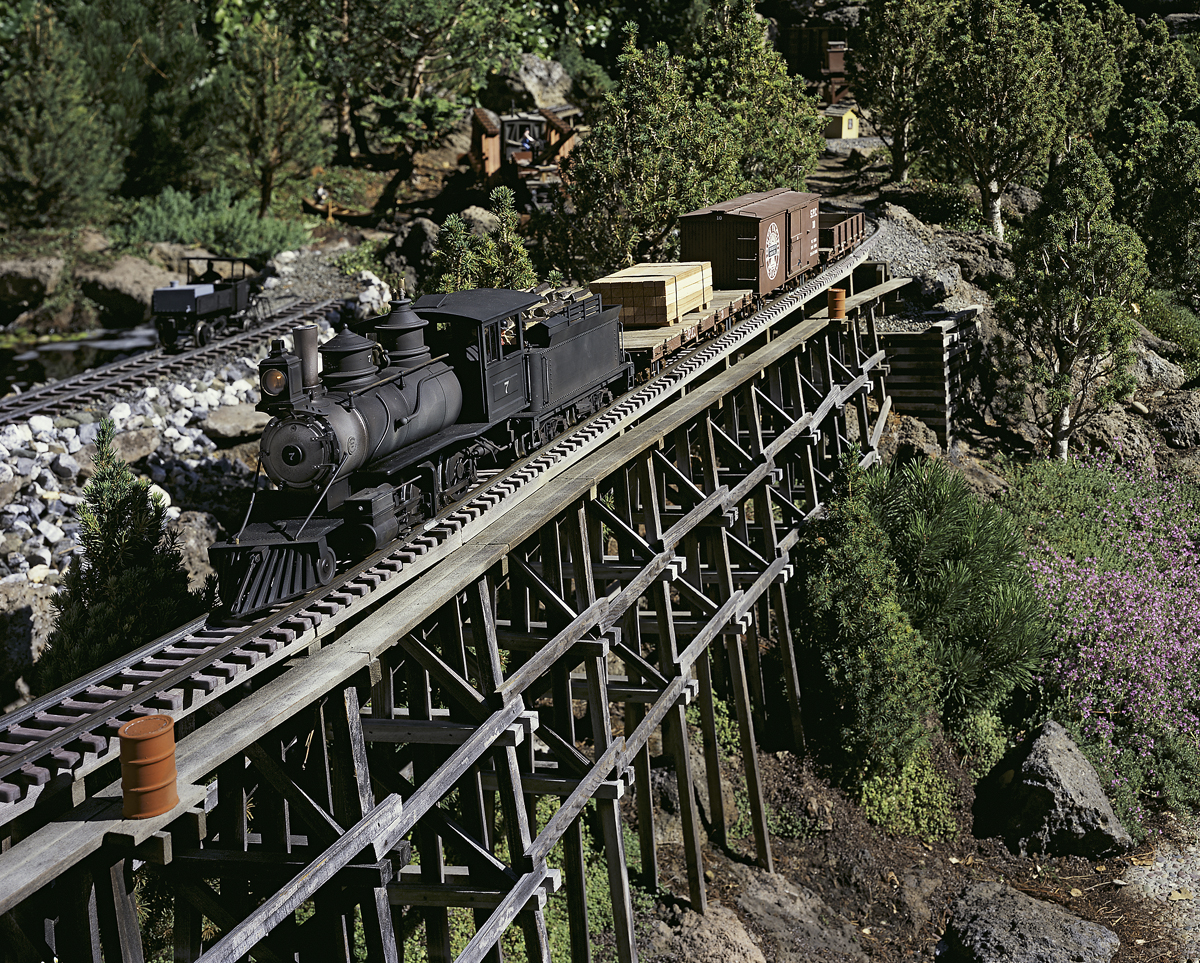
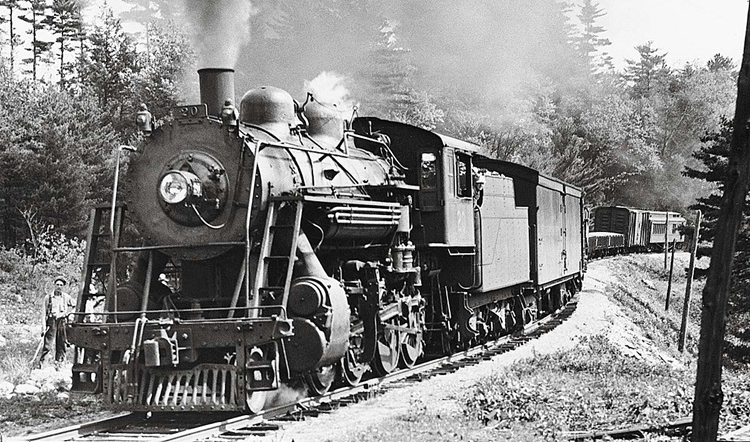





Cody, thank you for a great set of articles. In addition to buying post cards, most Historical Societies can make high resolution scans from their post card collections.
Diane Bassette Nelson
Interlaken, NY